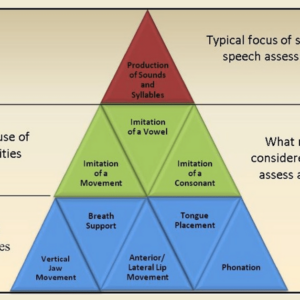Write Your Speech-Language Reports Faster
$15.00

Course Type: Video – 1 hour
ASHA Course Code: Education and Training Issues Associated with Speech, Language, Hearing and Related Disorders – 7020
Over and over again, speech-language pathologists report that writing the speech-language report is one of the most challenging aspects of the job.
If you identify with this, tune in to this course. We share strategies for writing high quality speech and language reports quickly. Learn tips from SLPs with years of experience, and download templates for sections such as dynamic assessment. Writing quality reports and writing quick reports don’t have to be mutually exclusive!
| Population | School Age |
|---|---|
| Topics | Evaluations |
| Duration | 1 hour |
| Credit | .1 Continuing Education Unit |
| Format | Video |
Financial Disclosure: Ellen Kester, Ph.D., CCC-SLP. Dr. Ellen Kester is the owner of Bilinguistics and receives a salary. Bilinguistics receives royalty payments for online courses.
Non-Financial Disclosure: Ellen Kester does not have any non-financial relationships to disclose.
The process of writing a speech-language report can be a daunting task. Before we even start testing we have piles of documents from teachers, parents, and possibly other professionals. It is a tedious job to organize it into a coherent background section.
Next, we use a series of formal and informal measures to gather information about receptive language, expressive language, articulation, phonology, voice, fluency, and pragmatics. Information about language skills can be further divided into content and form. For bilingual students we address all of these areas in a second language as well. Many speech-language pathologists struggle with how to efficiently organize all of the information into a report that is as succinct as possible but still includes all of the necessary components.
In this workshop, we’ll provide a framework to efficiently organize both the background information and the data gathered from formal and informal measures. We’ll share tables, charts, verbiage, and strategies that will help you produce well-organized reports in less time.
Participants will:
Write a background section that includes all pertinent parent and teacher information
Identify strengths and weaknesses from formal and informal testing measures
Describe dynamic assessment outcomes to inform the reader about effective starting points and meaningful goals
Time-Ordered Agenda:
05 minutes Introduction
10 minutes Report Template approaches
10 minutes Background Information
10 minutes Describing the results of formal and informal measures for language
10 minutes Describing dynamic assessment results
10 minutes Describing formal and informal speech testing measures
05 minutes Conclusion
Need CEUs?

 Share
Share
 Tweet
Tweet
 LinkedIn
LinkedIn
 Pin
Pin
 Email
Email




